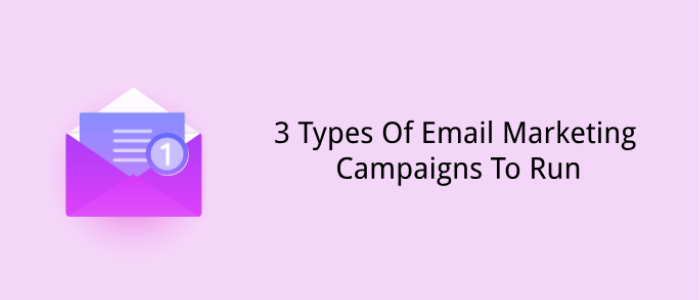One of the top questions we hear from our customers who use Juvlon is this: “What types of emails should we send?” We get it. Everyone knows that email marketing has a high ROI ($40 for every $ spent, they’ve found!), but creating the right mix of emails that offer value to your subscribers and drive revenue for your business needs some consideration.
And while there’s no standard formula of the ideal “email marketing mix,” there are a few campaigns that work well across both B2B and B2C industries. Unless you set up these email campaigns, hitting your email marketing goals (for example, generating sales, driving traffic to the website, building traction for an upcoming product, keeping the engagement going, etc.) can be challenging.
So let’s look at a few types of email marketing campaigns that you can run for your business with examples for each.
1. Transactional email campaigns
A transactional email is a personalized system-triggered email that fires when a customer performs a certain action. For example, when a user makes a purchase, they automatically get an email confirmation of their order. Such an email could also be automated based on specific situations, for example, if a user’s subscription ends, they might get an automatic reminder to renew it.
As per Experian, such emails receive 8 times more opens and clicks and generate 6 times more revenue than other marketing emails.
The most common examples of such emails are:
- Order confirmation notifications
- Shipping updates
- Registration alerts
- Password reset alert
- Reactivation
- Feedback requests
- Cart abandonment reminders
- Thank-you emails
And so on.
Transactional emails are a BIG part of the email marketing campaigns of online stores. They’re fairly common in B2B businesses as well.
Here’s an example of a transactional email from Apple.
Notice how the email reminds the subscribers about renewing their membership plan with a clear headline and a bold CTA button that stands out! The email copy is also short and snappy with a simple reminder to turn on automatic renewal. Transactional emails are usually modeled just like this.
2. Educational and engagement email campaigns
Educational emails are emails that don’t try to “sell” anything. They’re used to create awareness in your subscribers about your products and services.
And engagement emails are emails to your existing customers so that they keep engaging with your brand.
Let’s look at educational emails first.
These emails offer a quick or in-depth walkthrough of a product or share useful content such as tips, how-to tutorials, blog article series, and more to help subscribers understand what they can do with your product, without being salesy or pushy.
Here’s an example of an educational email from Adobe Creative Cloud. Notice how it includes a clear subject line explaining how to blend favorite parts of food shots with Adobe Photoshop. It also showcases a clear and bold headline, a large feature image about the product (food items) and a clickable CTA making it easier for the subscribers to watch the tutorial by a mere click and learn more about it.
As you can see from the example, there’s no attempt at selling anything. B2B businesses and service providers often send such emails.
And now let’s talk about engagement or re-engagement emails.
An engagement email is an email that keeps your customers engaged with your brand. Such emails are critical, given that email marketing databases decay at a whopping 22.5% rate every year.
Engagement emails come in handy here to keep the customers/subscribers’ interest alive in the products.
Some common examples of these emails are newsletters and product update emails.
Here’s an example of an engagement email from Pinterest. Notice how the email encourages users to explore more content on Pinterest. As you can observe, the only goal of this email is to get the subscriber to engage with Pinterest, that’s it. Your engagement goals, too, should be clear.
3. Promotional and sales email campaigns
A promotional email is an email that aims to make a sale. Such emails are laser-focused on getting the subscribers to click the “Buy button” and make a purchase.
A few common examples of such sales emails are the seasonal holiday emails, exclusive promotional emails promoting limited time offers, emails offering free shipping offers, and so on.
While promotional emails may be more common with B2C businesses and online stores, they’re fairly popular with B2B businesses as well. For example, it’s common for B2B businesses to offer their new products/services to their existing customers at a discount for a limited time. In fact, even B2B brands offer sales on occasions like Black Friday and Cyber Monday!
Here’s an example of a promotional sales email from Sitepoint. In its “50% off Easter sale” email, Sitepoint uses a lot of social proof to build trust in its subscribers. Not just that, it also uses a striking CTA and a catchy countdown timer to instill a sense of urgency. These are very common features of such emails and tend to work well.
Wrapping it up…
Once you’ve chosen the email campaigns to add to your email marketing mix, create your personalized email marketing calendar where you can visualize all the emails each campaign would entail. Except for transactional emails, you can map every single email you plan to send inside your calendar.
This way, you’ll have both: a high-level view of all the email campaigns you need to send along with their timelines and the actual emails each one would have.
What other email marketing campaigns do you send? Tell us in the comments.

